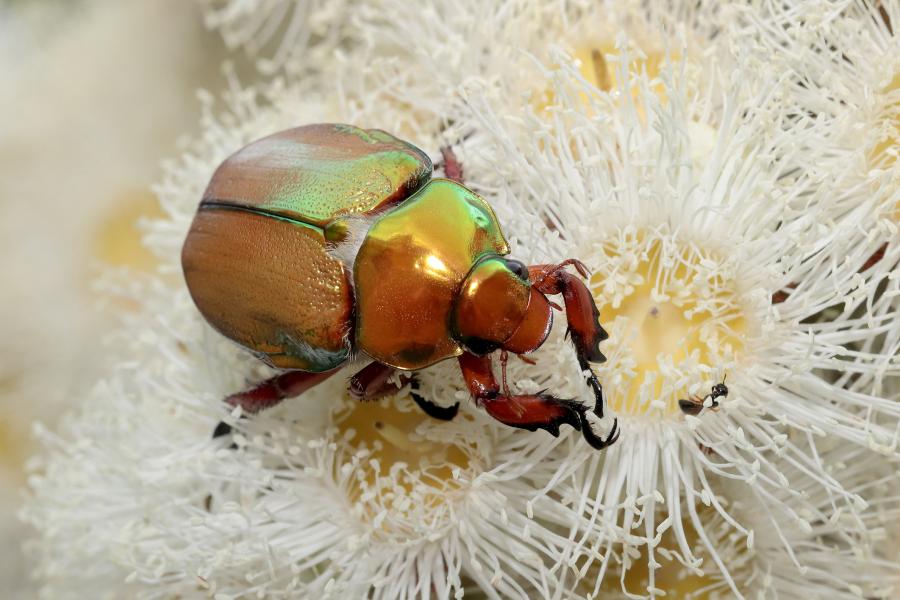What emotions do these images of animals evoke in you?


Christmas beetle,
2025
Ken Griffiths
A Christmas beetle feeds upon a Scrub apple flower.
More about this image-
Bright emotions
-
Not at all Extremely
-
-
Quiet emotions
-
Not at all Extremely
-
-
Heavy emotions
-
Not at all Extremely
-
-
Sombre emotions
-
Not at all Extremely
-
Species: Christmas beetle, Anoplognathus pallidicollis
Location and habitat: Australia
Conservation Status: Unknown

Compare yourself to others
Choose different variables below, and see the patterns of response reflected in the circle of emotion above. Your responses are the coloured wedges. Others' responses are averaged in the spider graph of lines and dots.

Creator: Ken Griffiths
Date: 2025
Medium: Photography
Copyright: Via Shutterstock
Does the Creator have an "inordinate fondness for beetles"? Or could the creator god -- if such a thing exists -- is itself some kind of cosmic beetle? Such questions were pondered by Stephen Jay Gould as he sought to account for the over 400,000 species of beetle, as thus far described by science. Beetles are by far the largest of all orders, constituting about 40% of insects and a full quarter of all known animal species. Thus, if this list of 100 lifeforms were mapped directly onto the actual proportions of species, there would have to be 25 beetles and no mammals (with just 6,596 species, mammals make up just 0.3% of the 2,161,755 known species, hence they would be rounded down to zero). For all their diversity, the gargantuan beetle family is united in having hardened front wings, called an 'elytra', with this distinctive feature giving rise to their scientific name, the 'Coleoptra', as coined by Aristotle who dubbed them koleos-pteron (κολεόπτερος), literally, sheath-wing.
The above pictured member of the order of Coleoptra is a scarab, specifically _Anoplognathus pallidicollis_, one of thirty eight species often called 'Christmas beetles', all native to Australia. This type of Christmas beetle is a striking tawny-gold, with a metallic, iridescence sheen reflecting electric greens. The first two years of a Christmas beetle's life is spent underground in a larval form, commonly called curl grubs, where they feed on decaying organic matter and the roots of native grasses. Near the end of winter in their second year, these creamy, chunky grubs move closer to the surface and pupate whereupon the undergo a total metamorphosis. The new adult beetle emerges at around Christmas time -- hence their name -- and is most active over the southern summer months, particularly around sunset.
They existed in vast numbers, with a century old report from Sydney observing that so many Christmas beetle would cluster on a eucalyptus tree than the branches would bend down to the harbour's waters under the sheer mass of insect. Even on a much shorter timeframe, there is broad agreement that the experiential and anecdotal evidence of a significant decline in Christmas beetles is compelling, yet formal research is yet to be conducted to verify this. The main driver is almost certainly habitat loss, with many of the grasslands they inhabited being laid over with tarmac and concrete, or given over to cattle industry, and with many a native forest logged. To try and collect data on the decline, a project called iNaturalist began to encourage people to download an app, and verify sightings of Christmas beetles. As of late 2024, the project has almost 24,000 identifications of 38 species, including the first known picture of a living *Anoplognathus vietor*, the rarest of the family and one what was only known from a single dead specimen, some 300km from where the live one was verified.





